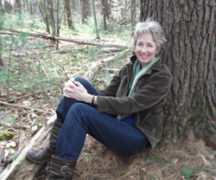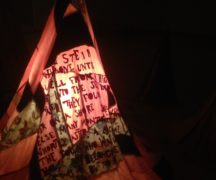By DAVIDDUPONT
BG Independent News
Writing stories can be a lonely job. Maybe that’s why fiction writers populate their stories with so many lonely souls.
So when award-winning fiction writer Wendell Mayo took the stage last week in what was billed as the first in the Spotlight on the Arts series, his theme was All My Lonely Ones.
But as a professor in the Bowling Green State University Creative Writing Program, he’s certainly not alone in his pursuit.
Eschewing the usual introduction, he spent the first few minutes of his presentation singing the praises of BGSU Creative Writing Program. And as a former engineer, he did it with a string of numbers including 415 books published by graduates of the program and 226 awards bestowed on their work. And that includes the big one, a Pulitzer Prize in fiction, for Anthony Doerr.
The program’s importance, though, is unquantifiable. “What we do here is bring authors from all over the world out of isolation,” he said.
Together they share insights and learn the craft of writing. Mayo said he started writing in the 1980s when he was living in the San Francisco and commuting by train to his job as a chemical engineer. There surrounded by people, his first lonely ones first stepped out onto the page.
Mayo then presented four examples of his own craft. “I introduce you to some of my lonely ones.”
Mayo offered a few words telling how each story came about, each a fictional elaboration on a real world situation, an example of how germ of inspiration from daily life can be spun into a fictional construct. Then he stepped aside as the stories were read by either F. Daniel Rzicznek or Jackie Cummins.
The first story, from early in Mayo’s career, grew out of a mystery about his mother. When his father died, she started signing checks including “Soledad” as part of her name. The checks bounced. He wondered where the name came from. In the story, it is the character’s mother who had died, and the narrator goes to Texas to discover the meaning of the name, Soledad.
The second tale grew out of a tragedy, though the story itself has comic moments and only hints at tragedy. While teaching Indiana Purdue University, Fort Wayne, a colleague told Mayo about a woman who had written something troubling in a paper. He was afraid she was the victim of domestic abuse. The teacher arranged to meet with her hoping to broach the subject, but before the meeting she was beaten to death by her spouse.
Out of this grew a story about a “scream queen,” a young man who dresses as the heroine in a reenactment of the climatic scene in “Creature from the Black Lagoon.”
Touched when he realizes one of those in the wealthy audience has been beaten, his scream is far too real, far too terrifying.
The third tale grew out of Mayo’s stint teaching in Lithuania after the Iron Curtain had collapsed. Despite the new freedoms, the remnants of state control remained as people struggled with the new realities. In the story, this ends up resulting in a horrifying “massage” for an American visitor.
The final story, one he later said is part of a collection now making the rounds of publishers, was inspired by a pulp story “My Sister Was a Psychic.” He wondered not about the psychic but the sister.
The story is set in 1962, in a lab in Cleveland where the work of nuclear war and the workings of frustrated love unfold on parallel planes. In the end, the listener is left wondering who is the most lonely, the sister unable to approach the man she loves or the one egging her on.
Both are in good company in the panoply of lonely ones who have emerged from Mayo’s imagination.





